Hiram Percy Maxim
By: Patrick Sweeney
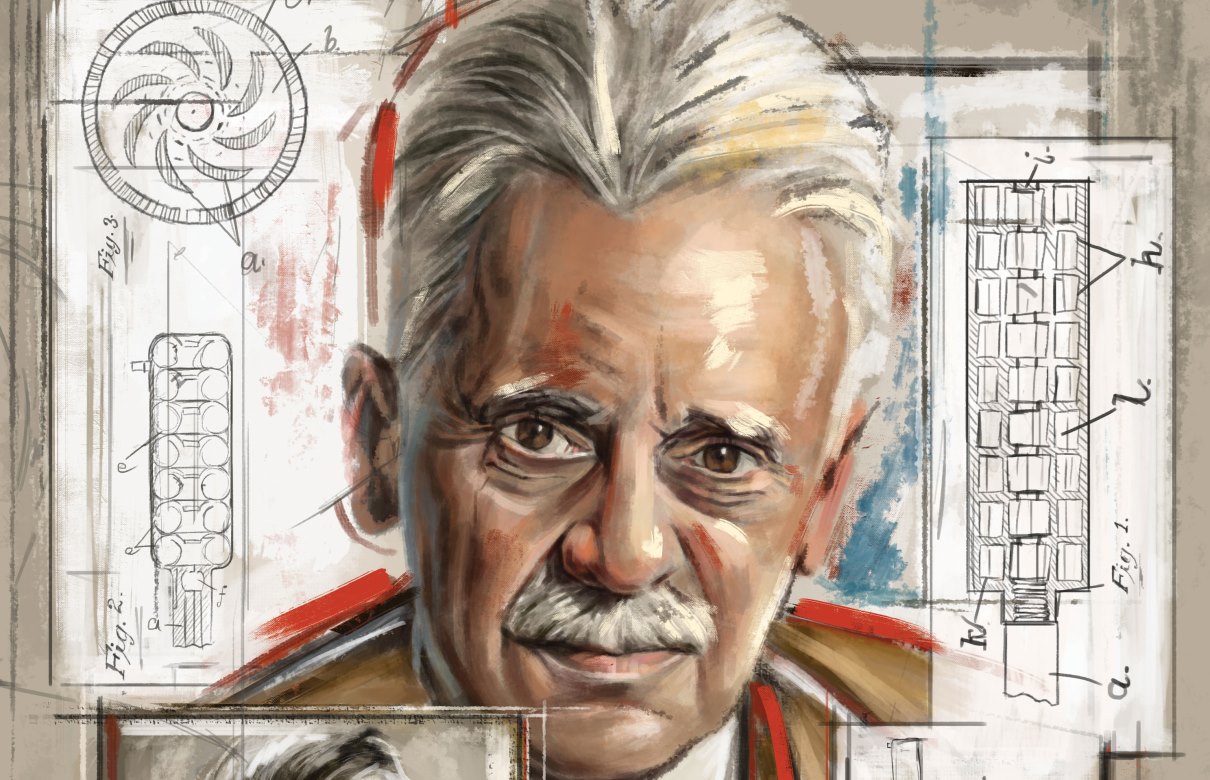 Hiram Percy Maxim, inventor of the firearms silencer. (Rob Bruno illustration)
Hiram Percy Maxim, inventor of the firearms silencer. (Rob Bruno illustration)
Shoot quietly
How, why and when were silencers invented? The time is easy; a quick search turns up the patent date of March 30, 1909, the date that U.S. patent #916885 A was issued, the first firearms silencer patent. Short of holding a séance or poring through the entire Maxim section of the Mystic Seaport Manuscript Collection, we can only take a stab at it – an educated stab, perhaps as educated as the man himself.
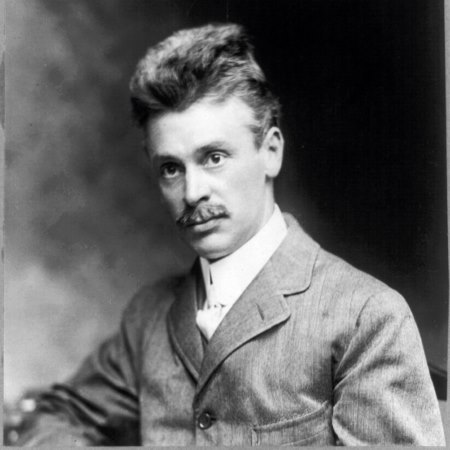 Young Maxim not only had a penchant for invention, he also
Young Maxim not only had a penchant for invention, he also
had an impressive hairstyle. (Photo courtesy of “Shooting Times”)Born the only son of Hiram Stevens Maxim (yes, the inventor of the Maxim gun), Hiram Percy was born to wealth and accomplishment. His father not only invented that paragon of steampunk ballistic murder (before there even was steampunk), Sir Hiram Stevens Maxim patented a laundry list of other items as well, insisting among other things that he had invented the light bulb; experimented with powered flight; and was even knighted by two crowned heads of England. Well, Queen Victoria knighted him, but she died before she could actually bestow that honor, so it fell to Edward VII to actually knight him. Hiram Percy Maxim also had an inventor uncle, Hudson Maxim, who developed a number of explosives and smokeless powders.
As a result, Hiram Percy had a lot of catching up to do. So, he did. Born in 1869, he was a graduate of the Massachusetts Institute of Technology in the class of 1886. OK, back then it was “only” a two-year degree, but still, he graduated from a premier school in a new and difficult field at the age of 16, the youngest member of his class. He then began working in firearms while at the same time experimenting with automobiles. Automotive work in the Mauve Decade was in the same kind of time frame that computer programming was in the early 1980s. You could be first, you could end up rich, but you had to be not just sharp but amazing, and you had to have luck.
Percy (can we just drop the “Hiram” and stop confusing him with his old man?) found internal combustion engines to be noisy, rattley, given to shaking, noisy, smelly and oh, did we mention noisy? He did get over it. He managed to invent a combustion engine, and then talk his way into working with an automobile company, and he was even the driver when that company, Pope Manufacturing, went off to the races, literally. He won the first closed-circuit automobile race in the United States, in 1899, driving the Pope Columbia.
He married the daughter of the former governor of Maryland. So far, this guy is sounding like a cross between a computer-programming wizard and a billionaire inventor, an Edwardian Era Tony Stark, perhaps.
How does the firearms silencer come into this? Remember that observation by Percy that the internal combustion engine was so noisy? Remember the last time a Harley-Davidson motorcycle drove past you? Loud, wasn’t it? Your typical Harley has a horsepower rating of more-or-less 40 hp. A leading-edge automobile of 1909 was the Cadillac 30. The Cadillac model number was the horsepower of the engine it held.
The idea of an engine muffler, or silencer, had not yet caught on. They had been patented, or at least improvements had been patented. There is U.S. Patent #582485A on certain improvements on earlier patents, but mufflers weren’t mandated by law. Early automotive pioneers and adopters recognized that a muffler dampened noise at the cost of horsepower, and when you’re dealing with dozens of horsepower, not hundreds, losing some is a big deal. Percy had to know this, so he didn’t waste any time inventing, designing, marketing and otherwise getting his share of the automotive muffler market.
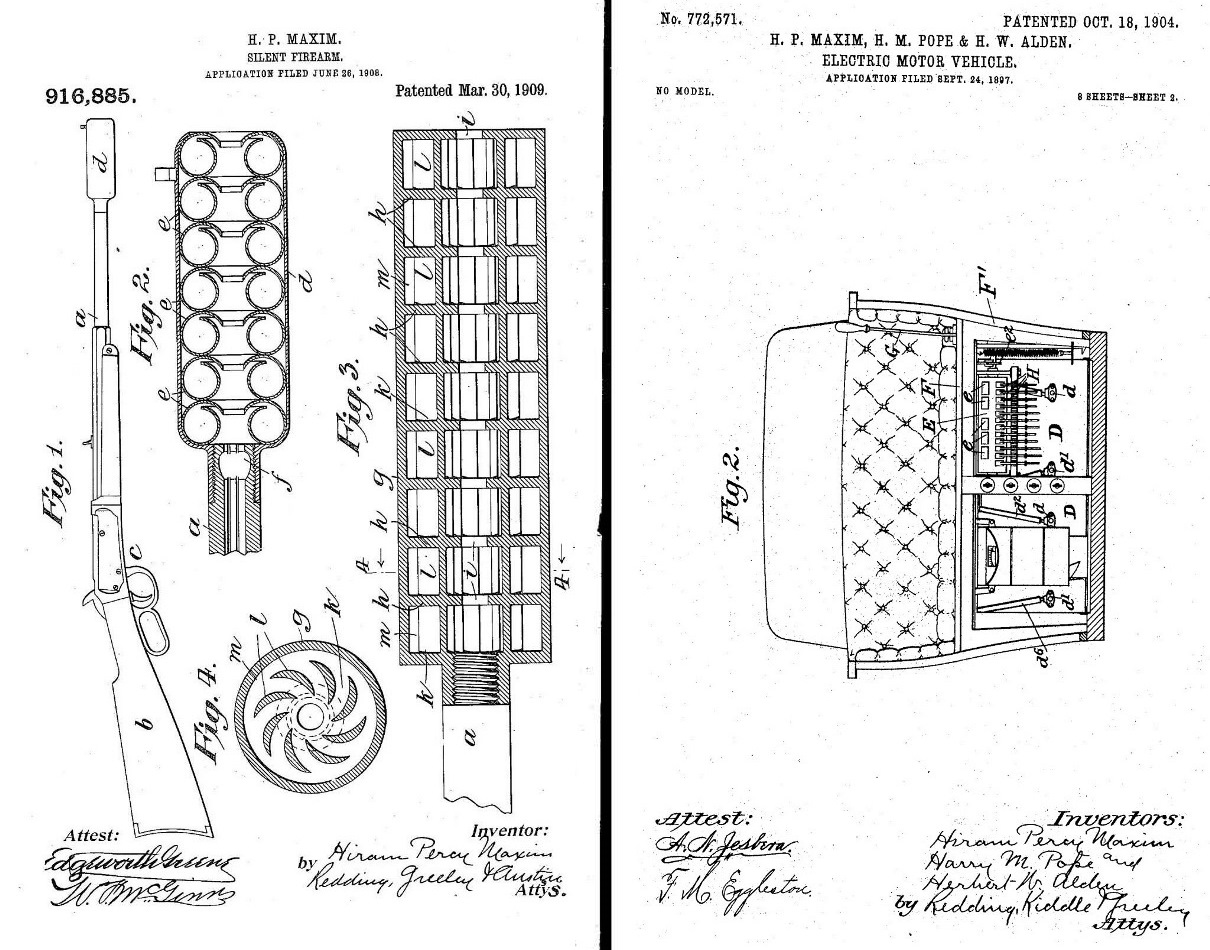
(Image courtesy of “Shooting Times”)
Imagine yourself on a fine spring day in New York City. You’re standing at the corner of 47th street and Seventh Avenue, admiring the newly completed New York Times building. While there, you and everyone else is oblivious to the ongoing change from the Gilded Age to the Progressive Era, because the temperature has gone up a few degrees in the last few days, and dear God, the stench from the horse manure in the streets is about to make you pass out. Even with a crew of diligent Irish immigrant workers (no one else will shovel up immense bins of “road apples” for such paltry wages), the city can’t keep up. Manure is heaped in furrows in the gutters, waiting for the next rainstorm to wash it into the rivers.
As you breathe through your perfumed handkerchief, an overwhelming noise assails you. It is so loud, it startles the horses, and you wonder if the stench has so warped your brain that sounds are magnified. Then one of those new automobiles passes by. You realize that it produces no manure and no offensive byproducts and that if you could simply dampen the noise, salvation would be at hand. The city would not disappear under a tidal wave of horse dung.
Early automobiles might have had but a dozen horsepower, but they would have had no mufflers at all in many cases. The noise would have been staggering, even if there were only one car operating per block of the city. Harley riders revel in noise for two reasons: The proper muffler gains them back horsepower, and noise is safety. If you are driving a modern, quiet car and you ask your passengers, “Dear God, what is that noise?” you are on your way to actually seeing a motorcycle. If you see it, you are less likely to hit it.
So, in the early years of the 20th century, Percy found himself in the automotive silencer business. But firearms?
By the first decade of the 20th century, smokeless powder had been around for about a generation. By the time smokeless came along, blackpowder had been in common use for the better part of three centuries. Everyone involved knew what it sounded like, what it involved and what regular shooting did to one’s hearing (in short, not much). We have to remember that “regular shooting,” even for those deeply involved, wasn’t a lot. During bird season, an English landowner would go through cases and cases of shells, but that still amounted to a few thousand rounds a year.
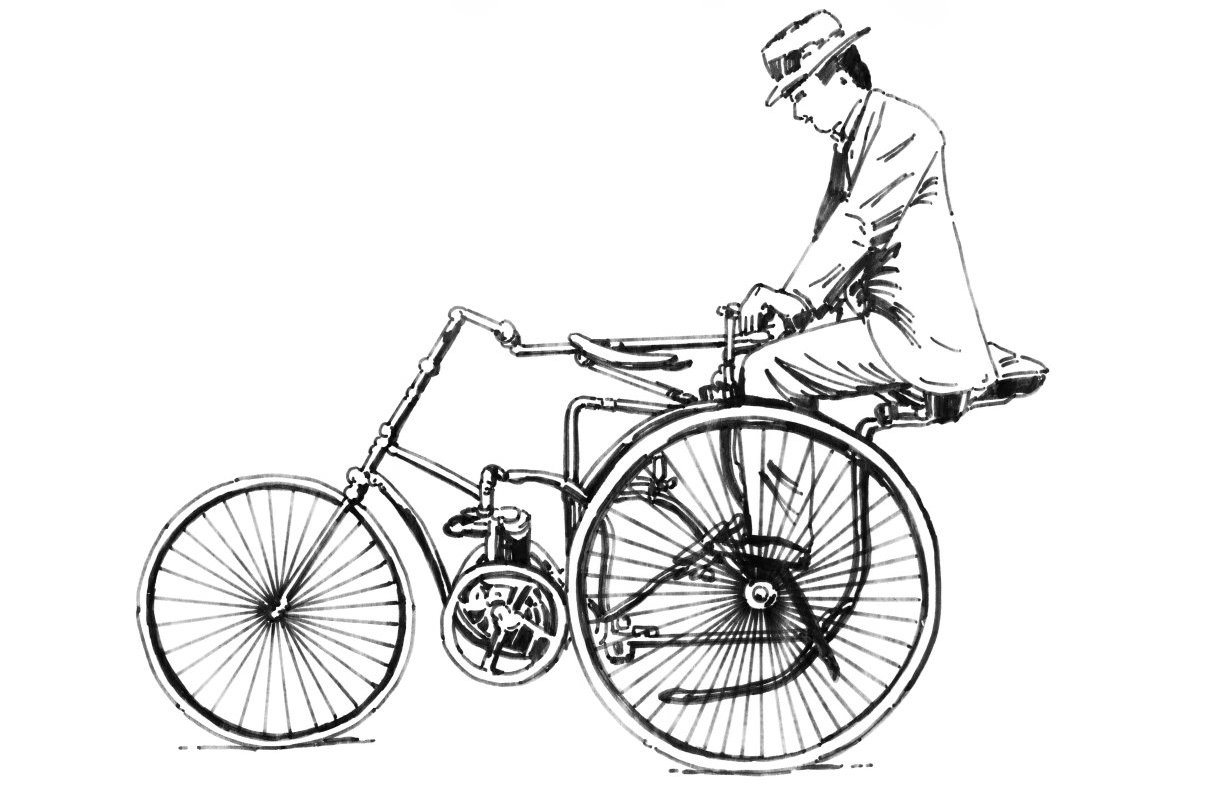
(Rob Bruno illustration)
In the American west, the famous gunslinger “Wild Bill” Hickok was alleged to practice each day with his cap-and-ball revolvers. He’d practice with one, then clean and load it, then practice with the other and do the same. Twelve shots a day adds up to over 4,300 rounds a year.
Smokeless repeating rifles? You could shoot that many rounds on a weekend if you were a masochist; in a week if you were merely diligent. A Maxim gun could grind through that much ammo and more in 10 minutes. And the new powder was loud, much louder than the old blackpowder was.
Percy knew this and wasn’t happy. “I have always loved to shoot, but I never thoroughly enjoyed it when I knew that the noise was annoying other people.”
Controlling the noise from automobile engines gave him the technical grounding, and a bathtub gave him the breakthrough and the Maxim Silencer for firearms. A bathtub? Yes. “I noticed in the bath tub the miniature whirlpool that forms over the drain hole when the plug is pulled … the water was able to run out, but slowly, because it was whirling.”
Why not whirl the muzzle gases from a firearm to slow them down and make the gun quieter?
Not only did he make guns quieter, he also designed them with an offset bore so shooters of the time would not have to change their sights to see over his silencer. Remember, in 1909 optical sights were fragile, expensive, new and rare. Everyone used iron sights, and Percy’s new silencer did not block your view of those sights.
In 1908, he formed the Maxim Silencer Company, incorporated in New Jersey, with capitalization of a quarter of a million dollars. That seems like chump change in today’s world, but adjusted for inflation, that comes to 6.5 million dollars – not bad for a brand-new startup making a product no one knew a thing about, at least not at that time. That company is still in business as Maxim Silencers, making mufflers for the oil, gas and power-generation market. Basically, it makes mufflers for engines the size of a small house.
Percy then went on to develop even more silencer/mufflers, for diesel engines, stationary engines (generators and such) and the intakes of compressors. He even developed and demonstrated an early window air conditioner, one that fit into the window and excluded the street noise from outside. In total, his name appears as inventor or co-inventor on a total of 59 patents.
The U.S. Army tested the new Maxim Silencer but found that while it did indeed make the Springfield 1903 rifle quieter and thus made marksmanship training easier, the Army could not find a tactical use for it.
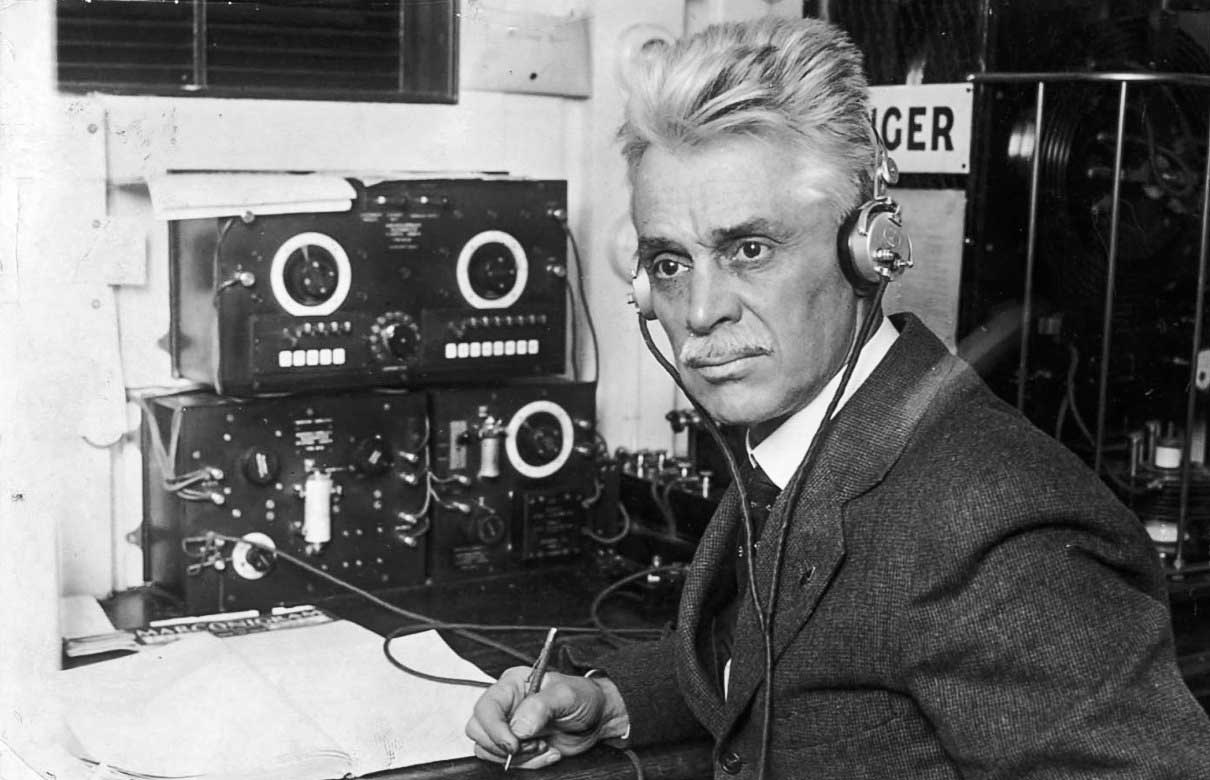
In 1914, Hiram Percy formed the Amateur Radio Relay League. (Photo courtesy of “Shooting Times”)
Even after inventing the firearms silencer, Percy wasn’t done. He took up radio, which was the Internet of its day. Radio was everywhere an aspiring young inventor wanted to be, and the new league he formed, composed of amateur radio buffs, let enthusiasts communicate with each other in what would have been either a sea of radio noise or a strictly government-controlled environment. To give you an idea of how early he was in radio broadcasting, he formed the Amateur Radio Relay League in 1914. The first commercial station to begin radio broadcasting wasn’t on the air until 1920. The first to broadcast was WWJ, Detroit, but the first commercially licensed station was KDKA in Pittsburgh. Radio, yes, but relay? Early transmitters had a range of a few up to perhaps 100 miles. If you wanted to get a signal from Hartford to, say, Los Angeles, you had to relay it.
Amateur radio buffs would receive a signal, copy down the message, then connect with someone in the right direction and pass it on. You can imagine how interested the U.S. Army was in this new form of communication once we entered the war. Well, the noncavalry Army, anyway.
Percy had a long interest in aviation, including chairman of the Hartford Aviation Commission and the founding of the first commercial aviation field there. As if all this wasn’t enough, he wrote books on his life, growing up as a member of the Maxim family and his early days of automotive pioneering work. He even wrote a book on contemporary science that contained a speculative chapter that posited life on other planets. This was in 1933, when Pluto had been discovered only a few years before and Hubble had made the discovery of galaxies not yet a decade before.
Percy’s newest love then was astronomy, and he traveled to the Lick Observatory in California, then hosting a 36-inch telescope. Sadly, on the return trip he fell ill and died. He had not yet made it to his 67th birthday. The digital one-trick-ponies of the app era have to look on a life such as his with envy. Yes, they have perhaps piled up a lot more money, but how many of us can ever claim so many and so varied accomplishments?
His daughter, Percy Maxim Lee, died in 2002. What a family! Her grandfather invents a firearm that changes military procedures, even history. Her father invents a dizzying array of products and forms organizations like some of us try on jackets. She herself was president of the League of Women Voters and chaired a presidential advisory committee. Their two lives, father and daughter, span the period from the end of the Civil War to the 21st century.
One can only hope that we can still find such people in 21st century America.
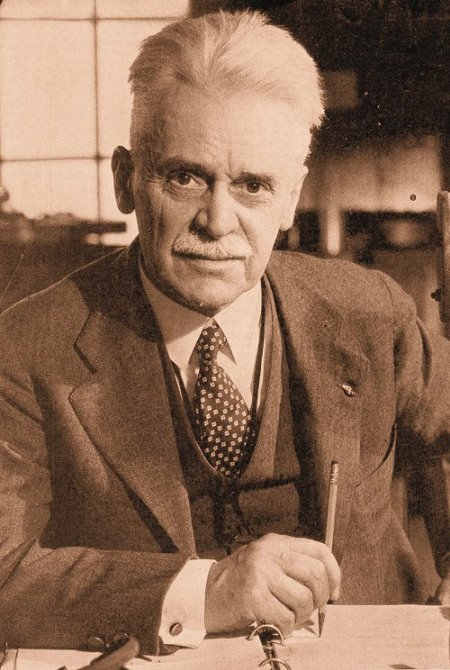 Hiram Percy Maxim (Photo courtesy of “Shooting Times”)
Hiram Percy Maxim (Photo courtesy of “Shooting Times”)The Life of Percy
1869 – Born September 2, Brooklyn, New York
1886 – Graduates MIT, mechanical engineering
1892 – Begins work at the American Projectile Company, becomes superintendent
1895 – Builds gasoline-powered tricycle
1895 – Hired by Pope Manufacturing Company, supervises production of gasoline vehicles and designs electric automobile for Pope
1897 – Is awarded automotive patent #594,805, November 30
1898 – Marries Josephine Hamilton, December 21
1899 – Wins Branford Park race, July 25
1904 – Is awarded automotive patent #757,941, April 19
1904 – Is awarded electric vehicle patent #772,571, October 18
1907 – Is awarded automotive patent #845,106, February 26
1908 – Forms Maxim Silencer Company
1909 – Is awarded firearm silencer patent #916,885, March 30
1910 – Is awarded firearms silencer patent #958934, May 24
1914 – Forms American Radio Relay League, April
1926 – Forms Amateur Cinema League
1933 – “Life’s Place in the Cosmos” is published